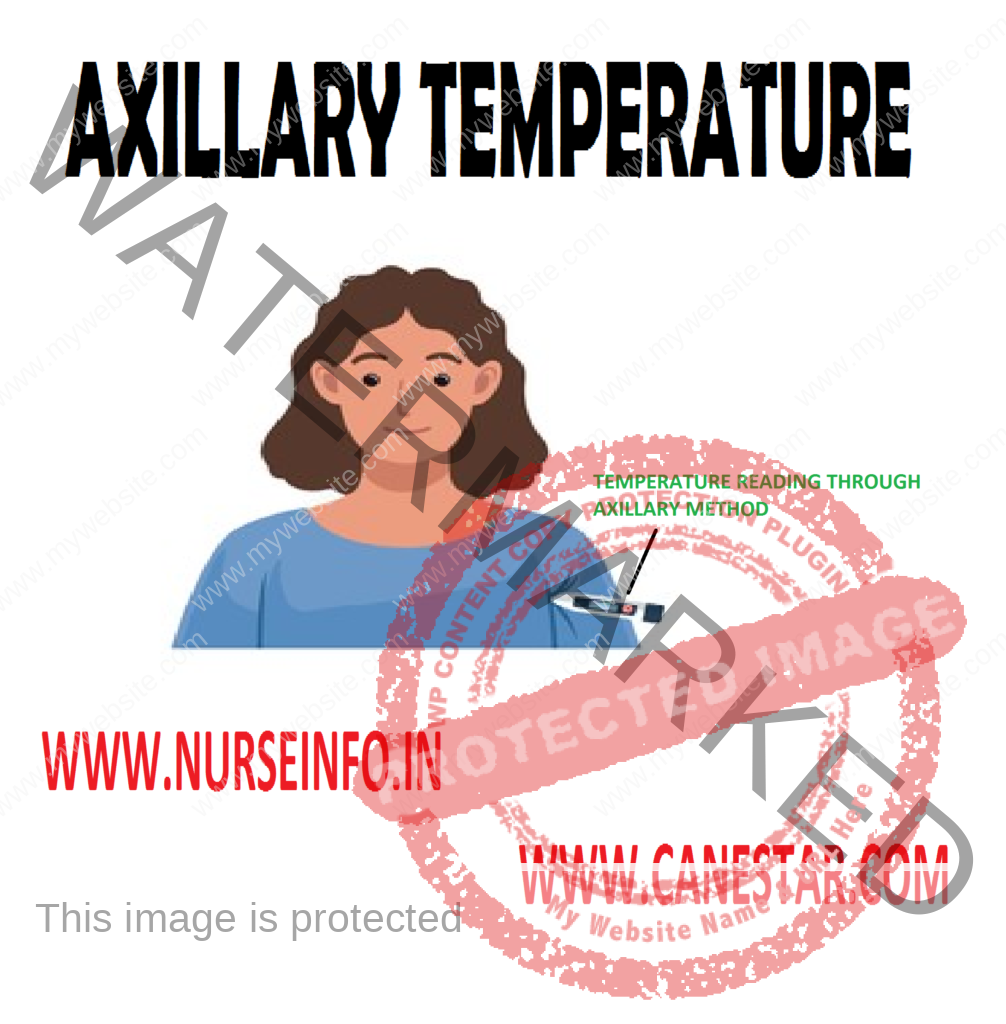AXILLARY TEMPERATURE
The temperature is sometimes taken by axilla when it cannot be taken by mouth or contraindicated to check oral temperature. Measuring axillary (underarm) temperature is another common method to assess body temperature, especially in infants, young children, or individuals who cannot easily use other methods.
Purpose
- To determine the body temperature of the patient
- To aid in making diagnosis
General Instructions
- Position the patient with the axilla exposed
- Gently pat the axilla dry with a facial tissue because moisture conducts heat. Avoid harsh rubbing, which generates heat
- Ask the patient to reach across his chest and grasp his opposite shoulder and to lower his elbow and hold it against his chest. This promotes skin contact with the thermometer
- Remove a mercury thermometer after 10 minutes; remove an electronic thermometer when it displays the maximum temperature. Axillary temperature takes longer to register than oral or rectal temperature because the thermometer is not closed in a body cavity
- Grasp the end of the thermometer and remove it from the axilla
Preliminary Assessment
- Determine the need to measure client’s body temperature
- Assemble equipment
- Identify the patient, greet the patient and explain the procedure
- Place the client in comfortable position, assess site most appropriate for temperature measurement
- Wait 20 to 30 minutes before measuring oral temperature if client has ingested hot or cold liquid or foods
- Hold the color coded end or system glass thermometer with finger tips
- If thermometer stored in disinfectant solution, rinse in cold water before using
- Take swab and wipe thermometer bulb end towards fingers in rotating fashion. Dispose of tissue
- Read mercury level while holding thermometer horizontally and gently rotating at eye level. If mercury is above desired level, grasp at the tip of thermometer securely and sharply flick wrist downward. Continue shaking until reading is below 35.5 degree celcius
Equipment
- Oral clinical thermometer
- Swab in a container
- Kidney basin or thermometer container
- Blue pen
- Watch with second hand
- Graphic TPR chart
- Paper bag
Procedure
- Dry the axilla
- Insert thermometer into center of axilla, low arm over thermometer, and place arm across client’s chest.
- Leave the thermometer in place for three minutes
- Remove the thermometer from the axilla
- Wipe the thermometer using a spirit swab from stem to bulb use a firm twisting motion
After Care
- Discard the used swab into the paper bag
- Read the thermometer holding it horizontally at the eye level, rotate it until the mercury column is seen
- Place thermometer in the kidney basin
- Record the temperature on the chart using blue pen and mention axillary
- Wash hands
- Report any unusual variations to the charge nurse
- Recording and reporting
Record temperature on vital sign flow sheet’s or nurse’s notes. Also record any signs or symptoms of temperature alterations.


